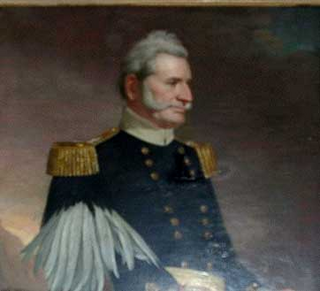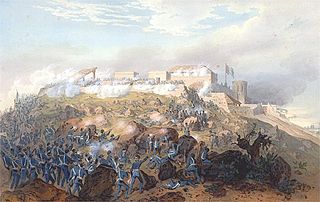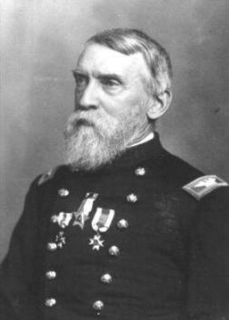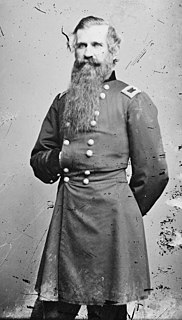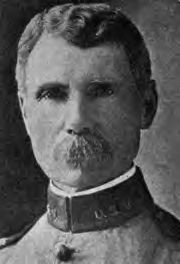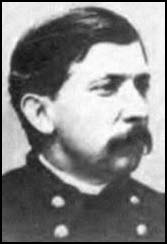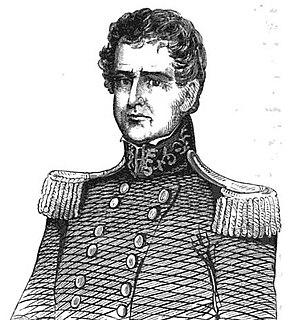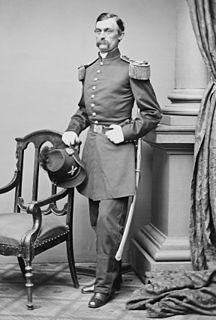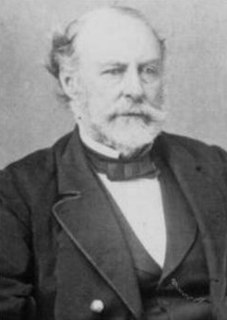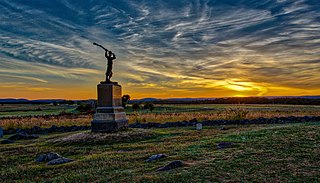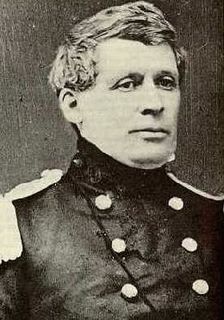Newman S. Clarke was a career military officer in the United States army who served with distinction during the Mexican-American War.

The United States of America (USA), commonly known as the United States or America, is a country comprising 50 states, a federal district, five major self-governing territories, and various possessions. At 3.8 million square miles, the United States is the world's third or fourth largest country by total area and is slightly smaller than the entire continent of Europe's 3.9 million square miles. With a population of over 327 million people, the U.S. is the third most populous country. The capital is Washington, D.C., and the largest city by population is New York City. Forty-eight states and the capital's federal district are contiguous in North America between Canada and Mexico. The State of Alaska is in the northwest corner of North America, bordered by Canada to the east and across the Bering Strait from Russia to the west. The State of Hawaii is an archipelago in the mid-Pacific Ocean. The U.S. territories are scattered about the Pacific Ocean and the Caribbean Sea, stretching across nine official time zones. The extremely diverse geography, climate, and wildlife of the United States make it one of the world's 17 megadiverse countries.
Clarke was born in Connecticut and served in the United States Army during the War of 1812. At the outbreak of the Mexican-American War in 1846, he was appointed colonel in the regular army. He commanded a brigade of regulars in General William J. Worth's division during the siege of Veracruz, being one of the first brigades to wade ashore. For his services at Veracruz, he was awarded with a brevet promotion to brigadier general of regulars. He continued leading his brigade at the battles of Cerro Gordo and Churubusco. He took a brief leave and command of the brigade went to his next in command, Lt. Col. James S. McIntosh. He was therefore not present at the bloody battle of Molino del Rey in which McIntosh was killed at the head of the brigade. The next officer to assume command of the brigade was also killed and the third commander of the brigade during the battle was severely wounded. Clarke returned to command in time for the assaults on Chapultepec and Mexico City.

Connecticut is the southernmost state in the New England region of the United States. As of the 2010 Census, it has the highest per-capita income, Human Development Index (0.962), and median household income in the United States. It is bordered by Rhode Island to the east, Massachusetts to the north, New York to the west, and Long Island Sound to the south. Its capital is Hartford and its most populous city is Bridgeport. It is part of New England, although portions of it are often grouped with New York and New Jersey as the Tri-state area. The state is named for the Connecticut River which approximately bisects the state. The word "Connecticut" is derived from various anglicized spellings of an Algonquian word for "long tidal river".

The United States Army (USA) is the land warfare service branch of the United States Armed Forces. It is one of the seven uniformed services of the United States, and is designated as the Army of the United States in the United States Constitution. As the oldest and most senior branch of the U.S. military in order of precedence, the modern U.S. Army has its roots in the Continental Army, which was formed to fight the American Revolutionary War (1775–1783)—before the United States of America was established as a country. After the Revolutionary War, the Congress of the Confederation created the United States Army on 3 June 1784 to replace the disbanded Continental Army. The United States Army considers itself descended from the Continental Army, and dates its institutional inception from the origin of that armed force in 1775.

The War of 1812 was a conflict fought between the United States, the United Kingdom, and their respective allies from June 1812 to February 1815. Historians in Britain often see it as a minor theater of the Napoleonic Wars; in the United States and Canada, it is seen as a war in its own right.
Clarke replaced John E. Wool in command of the Department of the Pacific in 1857. Clarke inherited the task of dealing with the ongoing Yakima War, which had begun in 1855. Responding to recent Indian attacks in southern Washington Territory, Clarke sent out a force of 600 troops under the command of George Wright, who had served with Clarke in Mexico. He also closed the territory to settlement. Wright defeated the Indians at the Battle of Four Lakes, but Clarke continued to keep settlers out. On September 13, 1858, Clarke took command of the Department of California, one of the two Army Departments created to replace the Department of the Pacific, while command of the Department of Oregon was turned over to General William S. Harney.

John Ellis Wool was an officer in the United States Army during three consecutive U.S. wars: the War of 1812, the Mexican–American War and the American Civil War. By the time of the Mexican-American War, he was widely considered one of the most capable officers in the army and a superb organizer.
The Department of the Pacific or Pacific Department was a major command (Department) of the United States Army during the 19th century.

The Yakima War (1855-1858) was a conflict between the United States and the Yakama, a Sahaptian-speaking people of the Northwest Plateau, then part of Washington Territory, and the tribal allies of each. It primarily took place in the southern interior of present-day Washington. Isolated battles in western Washington and the northern Inland Empire were sometimes separately referred to as the Puget Sound War and the Palouse War, respectively. This conflict is also referred to as the Yakima Native American War of 1855.
Clarke died a year later on October 17, 1860, while living in San Francisco, California.
